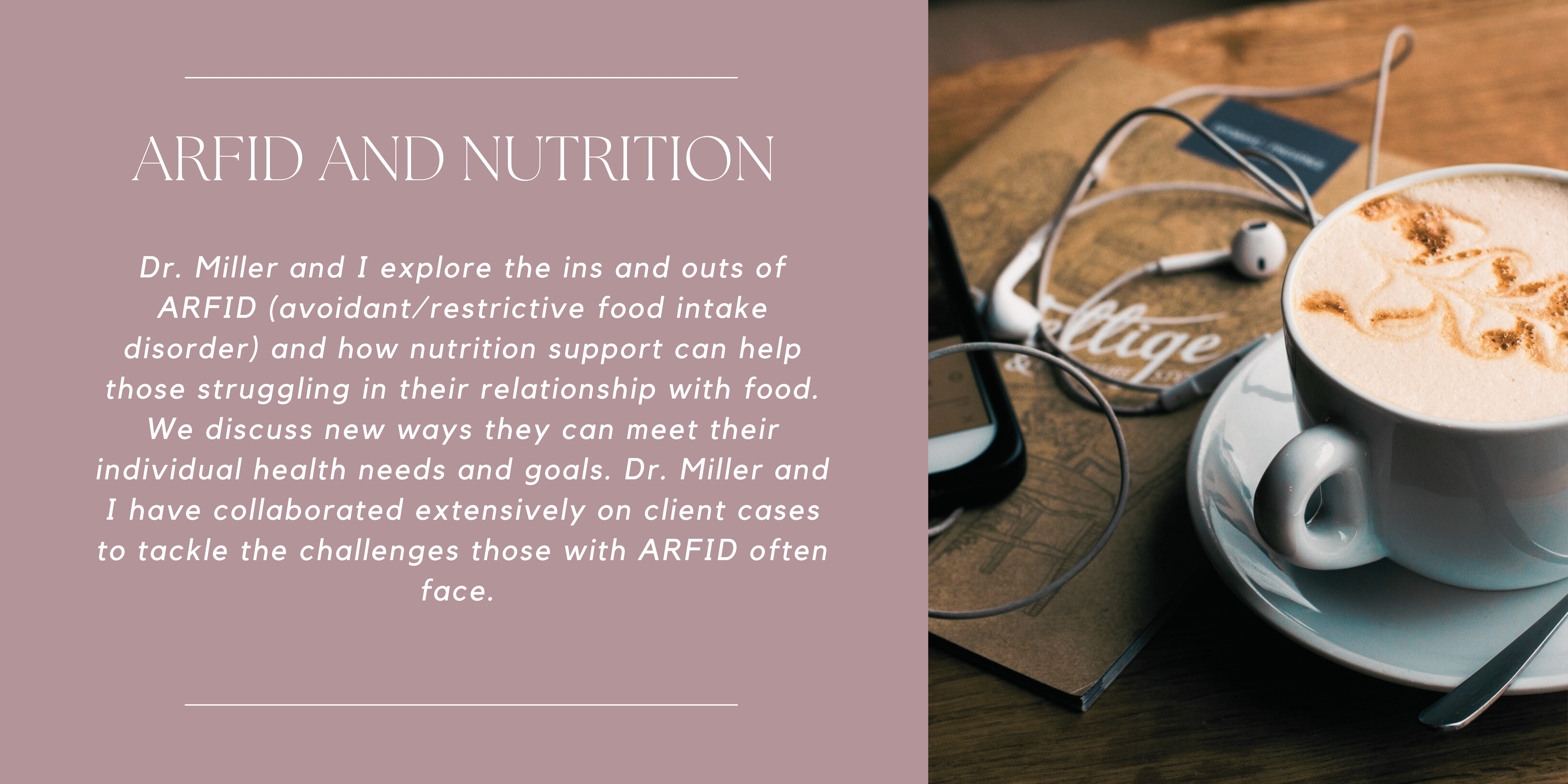
All About ARFID
What exactly is ARFID?
Let’s start with the DSM-5 definition. The DSM-5 (Diagnostic and Statistical Manual of Mental Disorders, 5th Edition) is the handbook used by health professionals both in the US and much of the world to diagnosis mental health disorders including eating and feeding disorders. The DSM-5 defines Avoidant Restrictive Food Intake Disorder (ARFID) as “an eating or feeding disturbance (e.g. apparent lack of interest in eating or food; avoidance based on sensory characteristics of food; concern about aversive consequences of eating) as manifested by persistent failure to meet appropriate nutritional and/or energy needs associated with one or more of the following:
- Significant weight loss (or failure to achieve expected weight gain or faltering growth in children)
- Significant nutritional deficiency Dependence on enteral feeding or oral nutritional supplements
- Marked interference with psychological functioning.
What this means is adults and children struggling with ARFID are unable to eat enough food and/or enough variety of foods to support their body’s unique needs to the point their physical and mental health, emotional well being, and ability to connect with others suffers.
Why does this occur?
Everyone wants to feel comfortable and safe around food! While it is expected that most people will have some foods they prefer over others, those with ARFID are unable to get enough food due to more extreme selective eating patterns. At some point while an adult or child was learning to eat, they encountered pain, discomfort, or difficulties that made it harder to develop a trusting relationship with food. These experiences can cause someone to restrict themselves as a way of trying to cope. While this can feel effective in the short term, overall health suffers in the long term.
What are some reasons people might avoid or dislike eating?
Medical issues like reflux, constipation, and allergies or food intolerances can cause someone to distrust how their body might respond to the foods they eat.
Being Pressured/pushed to eat by an authority figure can push a person in the opposite direction. For most, parents/caregivers are doing their best to keep their loved ones healthy and safe, but when added pressure is coupled with a history of scary experiences around food, this resistance can become automatic even for foods not yet tried.
Scary incidents like choking, gagging, having food or liquids go down the airway can contribute to distrust around food. If tongue, cheek, jaw muscles were weak or not working properly while a person was learning to eat, distressing experiences such as these can result. Individuals born prematurely or with other developmental delays are also at higher risk. Jaw misalignment or other structural differences can also affect the eating experience.
High sensitivity to certain textures, smells, flavors (common with sensory problems or for those with Autism Spectrum Disorder).
Is ARFID dependent upon one’s body size?
NO! ARFID/selective eating tendencies can be present in people of all ages, weights, body sizes, and body shapes. Contrary to common belief, malnutrition is not dependent upon someone’s weight or BMI. Malnutrition can be present in those in larger bodies as well. For more information on this, check out the article “Eating Disorders Come in All Shapes and Sizes” by Dr. Jennifer Gaudiani. Dr. Gaudiani is an internal medicine physician who specializes in medical care of adolescents and adults who have a complicated relationship with food and their body.
How can I get myself to eat a greater variety of foods?
If you want to be able to eat in a way that meets your unique needs but are unsure how, you are not alone! I often have clients come to session feeling discouraged and defeated. Due to their own internal messaging or messaging they received from those around them, they often believe they have no “willpower”, are “too lazy”, or “should just eat normally.” Remember ARFID/selective eating develops as a way to cope with difficult, painful, or uncomfortable experiences surrounding food. You are NOT “broken” or “lazy”! I work with clients to help them better understand the “why” behind their eating patterns and behaviors before jumping into action. “Normal” eating looks different for everyone. We can work to define your new normal so you can build trust in your relationship with food again.
What is your approach?
Acceptance, Understanding, Foundation, and Peace are the pillars of my approach. I embrace that every person or child has their own unique abilities, strengths, stressors, tendencies, etc that impact how they interact with food. I choose to take a collaborative approach to meal planning and preparation and work with my clients and their caregivers to establish common goals meant to promote health. I help my clients learn how to build a safe feeding environment and get enough energy in to support their body in tolerable ways first. When ready, exposure work is weaved in to help expand food choices. This can look like reworking meal time routines, developing grounding techniques, and reducing environmental stressors to lessen chaos around food and feeding.
Additional Resources
- STEPS+ Approach to Extreme Picky Eating
- Conquer Picky Eating Workbook for Teens and Adults– Katja Rowell, MD and Jenny McGlothin, MS, SLP
- Helping Your Child with Extreme Picky Eating: A Step by Step Guide for Overcoming Selective Eating, Food Aversion, and Feeding Disorders– Katja Rowell, MD and Jenny McGlothin, MS, SLP
- The Satter Hierarchy of Food Needs– Ellen Satter
PODCAST ALERT!
I had the pleasure of joining Dr. Marianne Miller on her podcast Dr. Marianne-Anne Land: An Eating Disorder Podcast. Dr. Miller is an eating disorder therapist specializing in binge eating, ARFID, bulimia, and anorexia. Check out her website, or follow her on Instagram!

Interested in receiving practice news and updates? Click here to sign up for my newsletter!
Contact Me
- + 619-913-7200
- 11440 W Bernardo Ct # 300
- [email protected]
Disclaimer- This website is for informational and educational purposes only. This site is not a substitute for medical advice. You may not use this site without reviewing the Terms of Use and Privacy Policy.
© Copyright- Caroline A Holbrook MS, RDN 2024